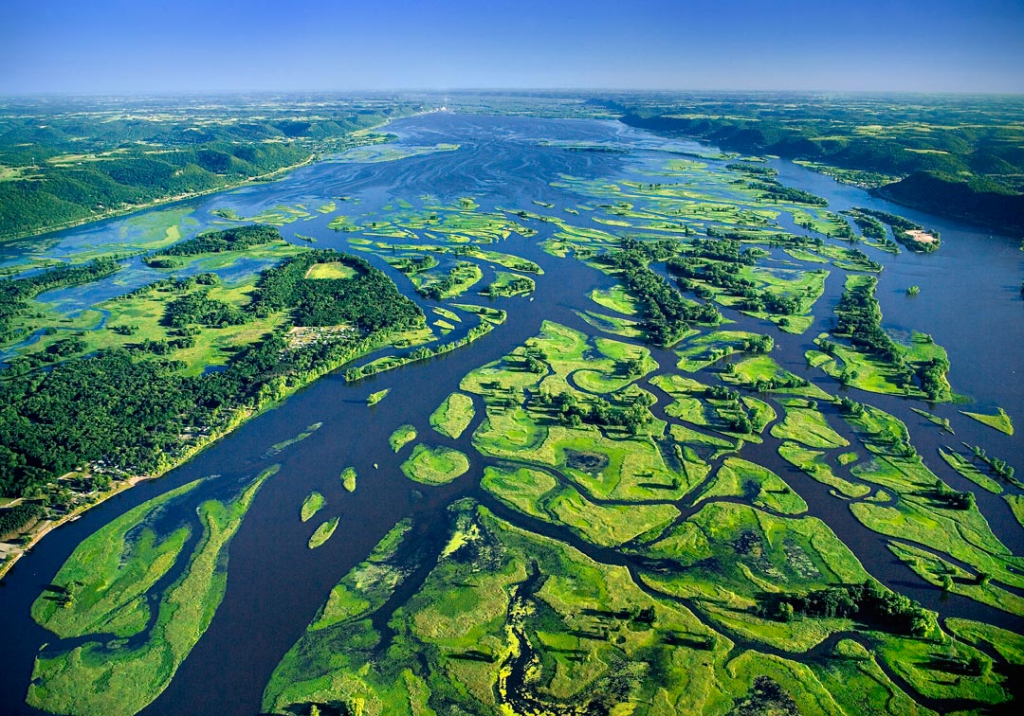Cedar River Watershed Project: Hydrology
By Taylor on October 17, 2012 in Blog

Written by Larry Stone
Pitter-patter, pitter-patter.
How relaxing to listen to the rhythm of a gentle rain falling on your roof or garden or sidewalk.
But translate that into a year's worth of precipitation and you'd get quite another sound: KA-BOOM!
The Earth would tremble and trees would shake from the energy of 20 tons of TNT being detonated. That's the approximate annual force of rainfall hitting the Earth on one acre of land, scientists estimate. No wonder that downpours can cause so much erosion and damage to our topsoil!
Richard Cruse, professor of agronomy and director of the Iowa Water Center at Iowa State University, along with coauthors Hillary Olson and John M. Laflen, outlined the tremendous forces contributing to erosion in a chapter of the book, A Watershed Year: Anatomy of the Iowa Floods of 2008.
The soil scientists said raindrops crash into the earth at 10 to 20 mph. If there is little plant material to absorb the impact, the force can dislodge tiny soil particles, which then bounce around on the soil surface. Those particles may end up plugging pores in the soil, limiting the amount of water the soil can absorb. The excess water runs off – eroding topsoil and carrying even more water into the streams.
Perennial growing plants can help by reducing the force of the raindrops on the soil, Cruse and his colleagues noted. The vegetation may not dramatically reduce the water runoff during an extreme rain, they conceded – but the permanent cover will curtail erosion.
Although many farmers have used reduced tillage or no-till farming in an attempt to slow runoff and erosion, those techniques may help only during light to moderate rainfall. The practices quickly lose their value as the soil becomes saturated, the scientists concluded. In heavy rains, crop residue from reduced tillage can even become a major problem, washing from fields to clog culverts, ditches, and fences.
But farm fields handle precipitation very differently than Iowa's native prairies and savannas once did, said Wayne Petersen, also writing in A Watershed Year. Petersen, urban conservationist for the Iowa Department of Agriculture and Land Stewardship, said no more than 10% of rainfall or snow might have run off the landscape before it was converted to farmland.
Half of the precipitation would have been held by the soil and vegetation, and slowly soaked into the groundwater, he explained. The remaining 40 per cent – after clinging to the surface of plants – probably would have evaporated back into the atmosphere.
“This ancient cycling of water's flow through native prairies and savannas was stable and sustainable,” Petersen said. “It was infiltration-based and groundwater-driven.”
Michael Burkart, a former researcher at the National Soil Tilth Laboratory in Ames and an affiliate professor in the Dept. of Geological and Atmospheric Sciences at Iowa State University, said that cycle has been dramatically altered by agricultural cropping, drainage, and tiling practices.
“These practices have systematically eliminated water storage on the land, accelerated the flow of water from the land, expanded the number of streams, and increased the velocity of water moving through the streams,” Burkhart wrote.
“With agriculture's need to remove water as quickly and efficiently as possible, Iowa's rivers now carry more water than ever before, creating the threat of extreme flooding that is magnified in size and extent,” Burkart wrote in A Watershed Year.
“No changes have had a more dramatic effect on our land and its hydrology that those associated with agriculture,” Burkart said. Tiling and other drainage destroyed the natural “sponge” that formerly held water in place on and in the land.
To further compound the problem, plowing the prairie to grow row crops, such as corn and soybeans, destroys the organic matter – and therefore the water-holding capacity – of the soil.
Urbanization likewise has impacted the watershed, Petersen said. Development often creates a “hydrologically dysfunctional” landscape, where impervious roofs, streets, parking lots, and even most lawns shunt water into storm sewers and nearby streams with virtually no chance to soak in.
People in cities should start looking at ways to increase infiltration of water, Petersen said. These might include permeable pavement, rain gardens to temporarily impound and infiltrate runoff, and restoring soil quality in lawns and other green spaces.
Farmers also could implement more practices to slow runoff, Burkart suggested, while conceding that most are long-term measures requiring public education and overcoming political and social obstacles. Some ideas included: developing perennial crops, restoring wetlands; changing crop subsidies to favor alternative and perennial crops; removing of tiles and other structures; and allowing streams to meander to increase their storage capacity and decrease water velocity.
Read the first and second articles in this series.
—–
Originally published by the Cedar River Watershed Project
Learn more about watersheds and how you can protect them.